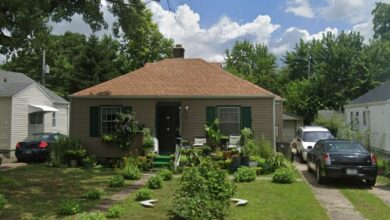MEDICAL SCHOOL YEAR 4: 1968-1969

Prior to the beginning of my fourth year, Indiana University raised medical school tuition more than 100%. After paying $350 per semester for three years, the fee rose to $750 twice a year. My classmates and I felt like we were being robbed. Thankfully, my wife’s $5400 annual teaching salary and the $2.10 per hour I made externing at Community hospital allowed us to save enough money to cover the increase.
The organization of classes changed year-to-year. We went from semesters in years 1 and 2, to quarters in years 3 and 4. I was off the summer quarter both years. The fourth year was a repeat of internal medicine and pediatrics rotations, but I, also, had short stints on orthopedics, ophthalmology, urology, ENT, anesthesiology, neurology, and psychiatry, plus one month electives offered by the various departments.
The best part of year four was that elective. It was advertised as a preceptorship with Dr. Roy Behnke, a brilliant, dynamic professor of internal medicine, and a great teacher. My first year, he had given fascinating weekly lectures on the history of medical advances and medical innovators so I looked forward to one-on-one time with Dr. Behnke. Unfortunately, I saw him for only an hour twice a week. Much of that time was spent discussing our patients with my resident and intern so my contact with him was disappointing.
The trade-off, though, was even better. My resident was Dr. August M. Watanabe. Gus was the best, the smartest, the nicest resident I had. He was an excellent communicator and loved to have impromptu discussions on medical subjects during hospital rounds or during a free moment. For example, he knew the coronary artery anatomy thoroughly and diagrammed which artery supplied which area of the heart. He then explained how a blockage of that artery affected the patient’s EKG. He talked about treatment options for just about any subject discussing pros and cons of each. Later, Dr. Watanabe became chairman of the IU Department of Internal Medicine, then moved into a top executive position with Eli Lilly Pharmaceuticals. That month, I saw Gus every day and Dr. Behnke twice a week. It was a lucky break and great experience.
My Pediatric rotation included two months of inpatient and one month of outpatient peds. I recall a girl with Turner’s syndrome and another with Anorexia Nervosa. Memories of this experience are scant, but I had enough exposure to know I really liked pediatrics.
A series of surgical subspecialties occupied several other months of year four. Orthopedics was at MCGH. I saw every imaginable broken bone, assisted in surgery, learned to apply plaster casts. The experience at Community hospital plus my time at “General” helped me decide orthopedics might be the specialty for me.
Urology was a three-week rotation at Methodist Hospital. The medical staff was loaded with urologists so I saw more cystoscopies than I care to remember. I assisted in surgery, and saw kidneys removed, stones extracted, and prostates reamed.
Anesthesia was a three-week rotation at MCGH. This time was used to learn how to intubate (insert a tube in the windpipe) patients. An endotracheal tube is inserted through the mouth directly into the upper airway to insure adequate air gets to the lungs. I intubated enough patients to feel very comfortable doing it and still would to this day. I saw an open-drop ether anesthetic and did one myself. Ventilator management was taught, also.
My Ophthalmology rotation lasted two weeks. I saw cataracts and cataract surgery, styes, chalazions, corneal abrasions, and all types of retinal problems. There was very little I found exciting about ophthalmology. It’s a very limited specialty. Most eye doctors don’t own, let alone use, a stethoscope. Ophthalmology was not the doctor role I envisioned for myself.
ENT, otorhinolaryngology, was another two week rotation I found quite boring. My exposure to ENT in med school did not reflect what I saw in practice. Medical center ENT problems were mostly rare hearing disorders or head and neck cancers. In practice these occurred, but far less often than ear infections, sinusitis, nosebleeds, or peritonsillar abscesses. I eliminated ENT, too.
Neurology and psychiatry were scheduled back-to-back. Both rotations were at the VA and were each a month long. Psychiatry involved inpatient care of schizophrenics and outpatient evaluation of depression and psychoses. There was little supervision of my care, and social workers were my preceptors. The outpatient experience was most valuable because I got to evaluate psychotic patients before treatment was started. Interviewing a paranoid or hallucinating patient is very much a challenge.
Neurology was a disappointment. What I saw most were old stroke patients hospitalized for something else. I was able to gain experience by doing neurological exams on these folks, but acute neurologic syndromes and neuropathies were rare. My resident, Dr. Charles Spurgeon, taught me a lot, but had very few patients to show as examples. I actually learned more after I went into private practice because I saw patients acutely and had the chance to be the first to evaluate them.
The summer quarter between years 3 and 4, I continued to extern on the day shift at Community Hospital. During school time I worked nights at Community and also took night call on the services that required it. Every night on call or evening spent in the ER provided me a learning opportunity. The more things I saw, the more I learned.
In mid-July, 1968, my father was diagnosed with Cancer of the Pancreas. He was hospitalized at Community from July 15th until he died October 1st. My time was not my own. Morning and evening visits to see my Dad, externing at Community once or twice a week, plus med center night call, left Sandy alone quite a lot. Studying and preparing for tests was squeezed in, too.
It was a busy time; a difficult time. It was four long years. But I made it. June 9, 1969, at the Indiana University Auditorium on the Bloomington campus I was awarded the degree of Medical Doctor. Every hour I spent, every family event I missed, and every sacrifice I made was worth the goal of becoming a physician. I enjoyed most of my classes, most of my professors, all of my residents and interns, and most of the services I was on.
In earlier blogs I expressed how fearful I was of failing, how competitive the academic atmosphere was, and how I felt I didn’t measure up to some of my classmates. All of this anxiety was unwarranted because in the Spring of year four I was chosen for membership in Alpha Omega Alpha, the national organization for academic excellence in medical education. I am very proud of that honor.
Next will be a blog about members of the medical school class of 1969, and the accomplishments and accolades they earned. More later.




